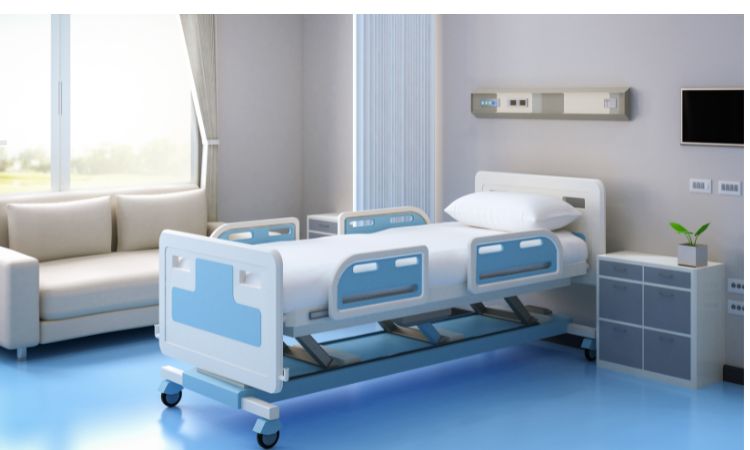Exploring the Growing Scope of the Medical Bed Market
In an era where healthcare is evolving rapidly, the medical bed market has quietly become one of the most critical components of patient care infrastructure. No longer just a place for rest, modern medical beds are now high-tech platforms equipped with smart features, adjustable settings, and mobility-enhancing designs that directly influence recovery time, caregiver efficiency, and patient comfort.
From basic hospital beds to specialized ICU beds and home care solutions, this market is undergoing a transformative shift. The demand is driven by a combination of factors including an aging global population, rise in chronic diseases, expanding healthcare facilities in emerging economies, and the growing emphasis on patient-centric care.
Expert Market Research Insight
According to Expert Market Research, the global medical bed market is expected to grow steadily in the coming years, driven by the increasing prevalence of chronic illnesses, demand for enhanced patient care, and expanding healthcare systems in emerging markets. The research points to a shift toward more technologically advanced and patient-oriented bed designs that not only improve patient outcomes but also reduce the burden on caregivers.
Key players are innovating rapidly—offering beds with modular designs, antimicrobial surfaces, and AI-integrated capabilities to adapt to different care settings. As hospitals increasingly focus on operational efficiency and improved recovery environments, the demand for versatile and cost-efficient medical beds is set to remain strong. This trend is particularly notable in developing economies, where rising incomes and public healthcare investments are aligning with global standards.
Regional Snapshot: How the Market Varies Globally
The dynamics of the medical bed market vary significantly across regions. In North America, particularly the United States and Canada, high healthcare spending, advanced hospital infrastructure, and early adoption of medical technologies are propelling demand. The presence of leading manufacturers and continuous R&D investment further support market expansion in this region.
Europe follows closely behind, with countries like Germany, the UK, and France showing a steady increase in hospital admissions and elderly care centers. Government initiatives for elderly care, along with stringent healthcare policies, contribute to the adoption of advanced hospital beds.
Asia-Pacific, meanwhile, is experiencing the fastest growth. Rising population, increasing access to healthcare, and growing investments in hospital infrastructure in countries such as India, China, and Japan are driving the demand. In India, for example, the government’s focus on expanding healthcare access in rural areas and setting up new hospitals under public-private partnerships is creating opportunities for manufacturers of cost-effective medical beds.
In Latin America and the Middle East & Africa, the market is gradually gaining pace. While the infrastructure may not be as developed, increasing urbanization and investment in healthcare sectors are opening new frontiers for affordable and functional medical bed solutions.
Technology and Innovation in Modern Medical Beds
Modern medical beds are more than just tools for patient comfort—they now support medical staff with features such as electronic controls, integrated monitoring systems, fall alarms, and mobility assistance. ICU beds are increasingly equipped with sensors that track vital signs, tilt functions to reduce bedsores, and memory foam mattresses for pressure management.
Smart hospital beds are becoming a new norm, especially in developed nations. These beds are connected to the hospital’s information systems and can alert staff when a patient attempts to leave the bed, adjust to optimal positions automatically, and even help in lifting or repositioning immobile patients.
As home healthcare becomes more common due to high hospital costs and the desire for comfort, there’s also growing interest in home care beds. These are designed to be user-friendly, space-efficient, and compatible with domestic surroundings while still offering features like adjustable heights and remote control operation.
The Role of the Pandemic in Market Acceleration
The COVID-19 pandemic highlighted the importance of hospital infrastructure, especially ICU readiness. The unprecedented demand for critical care beds exposed gaps in healthcare systems, prompting emergency purchases and long-term investments in medical bed capacity.
In response, manufacturers ramped up production, introduced modular ICU bed systems, and accelerated the development of remote monitoring capabilities. This period of intense pressure has left a lasting impact on the way healthcare facilities view their bed infrastructure—as a long-term investment rather than a short-term necessity.
Future Outlook: More Than Just a Bed
Looking ahead, the medical bed market is likely to integrate even more advanced features such as AI-assisted movement, personalized comfort settings using biometric feedback, and IoT connectivity for predictive maintenance. Beds may soon become full-fledged health hubs, continuously collecting and transmitting patient data to healthcare professionals in real time.
Sustainability is also gaining traction, with hospitals and manufacturers aiming to reduce carbon footprints by using recyclable materials and energy-efficient designs. Meanwhile, affordability remains a key concern, especially in developing nations. This has opened the door for local manufacturers and innovators to develop affordable, durable beds without compromising essential features.


